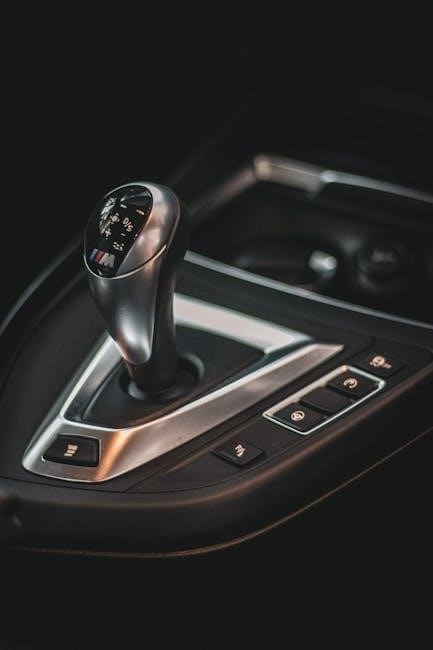The Aprilaire Humidifier Manual Control offers precise humidity management, allowing users to set their preferred relative humidity levels. Installed in the cold air return duct or on an interior wall, it ensures optimal comfort and health benefits by maintaining consistent moisture levels year-round.

Installation Guide
Install the Aprilaire Manual Humidifier Control in the cold air return duct or on an interior wall. Use the provided template to mark and cut the duct opening. Ensure proper low-voltage wiring connections for seamless operation.
Choosing the Right Location and Wiring
Selecting the optimal location for your Aprilaire Humidifier Manual Control is crucial for effective performance. Install it in the cold air return duct or on an interior wall, ensuring it’s easily accessible for adjustments. Avoid areas exposed to direct sunlight or extreme temperatures to maintain accurate humidity readings. For wiring, connect the control to a low-voltage circuit, typically 24V, to ensure safe and reliable operation. Use the provided wiring diagram to connect the humidifier, furnace, and control unit correctly. Proper wiring prevents electrical issues and ensures the system operates efficiently. If unsure, consult a licensed HVAC professional to handle the installation, especially if integrating with existing systems. Correct location and wiring are essential for maintaining consistent humidity levels and prolonging the lifespan of your Aprilaire humidifier.

Operating the Manual Control
Operate the Aprilaire Manual Control by setting your desired relative humidity level. Use the test/reset feature to ensure proper function. Adjust settings as outdoor temperatures change to prevent excessive condensation and maintain optimal indoor humidity levels.
Understanding the Control Interface and Adjustments
The Aprilaire Manual Humidifier Control features a straightforward interface designed for easy operation. The control includes a dial or knob for setting the desired relative humidity (RH) level, typically between 30-50% for optimal comfort. Some models may include a digital display for precise readings. To ensure proper function, the control has a test/reset feature, which can be activated by setting the knob to the “Test/Reset” position. This mode checks the system’s operation and resets it if necessary.
Adjustments are made by turning the knob to increase or decrease the humidity level. The control is usually installed in the cold air return duct or on an interior wall, providing easy access for adjustments. For manual mode, it’s important to monitor outdoor temperatures and reduce settings during colder periods to avoid condensation issues. The control operates on low voltage, ensuring safe and efficient performance. Regularly checking and adjusting the settings helps maintain consistent indoor humidity, promoting comfort and preventing dry air-related issues.

Aprilaire Models with Manual Control
Popular Aprilaire models with manual control include the 500, 600, and 700. These models offer precise humidity management, with features like built-in bypass dampers and varying coverage capacities, ensuring optimal performance for different home sizes.
Model 500, 600, and 700 Features
The Aprilaire Model 500 is a compact, bypass-style humidifier with a built-in damper, designed for smaller homes up to 2,500 square feet. It operates in both automatic and manual modes, providing flexible humidity control. The Model 600 is a high-performance bypass humidifier, ideal for larger homes up to 4,000 square feet, utilizing the furnace blower for efficient operation. Both models are known for their reliable, low-maintenance design.
The Model 700 stands out with its advanced digital control, offering precise humidity management and automatic adjustments based on outdoor temperatures. It covers homes up to 4,200 square feet, delivering up to 50% more moisture than competitive models. All three models are durable, with robust construction and long-lasting components, ensuring years of trouble-free operation. These features make them popular choices for homeowners seeking efficient, whole-house humidity solutions.
Maintenance Tips
Regular maintenance is essential to ensure optimal performance and longevity of your Aprilaire humidifier. Start by replacing the water panel annually to prevent mineral buildup and bacterial growth. Clean the humidifier control periodically to ensure accurate humidity readings and smooth operation. Check and replace the humidistat filter as needed to maintain precise control over moisture levels.
- Inspect the drain system to ensure proper water flow and prevent blockages.
- Flush the humidifier and drain lines seasonally to remove sediment and debris.
- Monitor the outdoor temperature and adjust settings manually if necessary to avoid over-humidification.
- Refer to the user manual for specific maintenance recommendations tailored to your model.
By following these maintenance tips, you can ensure your Aprilaire humidifier operates efficiently, providing consistent comfort and improving indoor air quality throughout the year.
Troubleshooting Common Issues
Troubleshooting your Aprilaire humidifier with manual control can help resolve common issues efficiently. One frequent problem is excessive condensation, which can occur if the humidity setting is too high. To fix this, lower the relative humidity (RH) setting on the control. Another issue is inaccurate humidity readings, often caused by a dirty or faulty humidistat sensor. Cleaning or replacing the sensor typically resolves this problem.

- If water flow is inconsistent, check for mineral buildup in the water panel or distribution tray and clean or replace it as needed.
- A common cause of insufficient humidity is improper installation or clogged air ducts. Ensure the humidifier is installed correctly and ducts are clear;
- For models with manual mode, ensure the blower switch is set to “Auto” or “On” during operation.
- If the system does not turn on, verify that the manual control is set to the correct mode and the humidistat is functioning properly.
Regularly addressing these issues ensures your Aprilaire humidifier operates smoothly, providing consistent humidity levels for optimal comfort and health.
Whether installed in manual or automatic mode, the system’s ability to adapt to changing conditions ensures consistent performance. Regular maintenance and troubleshooting of common issues, such as excessive condensation or inaccurate readings, can further enhance its efficiency. By understanding and utilizing the manual control effectively, homeowners can enjoy improved air quality, reduced allergy symptoms, and a more comfortable living environment.

















































